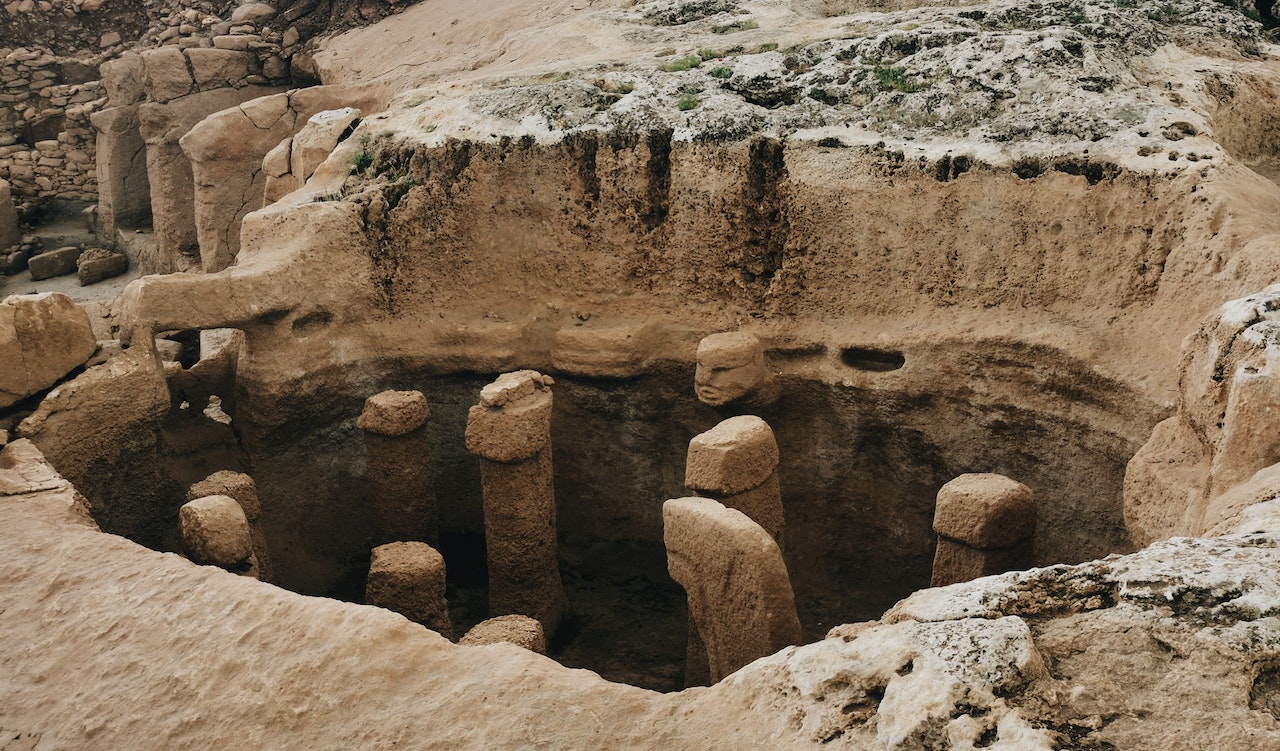Nestled in the southeastern region of modern-day Turkey, Göbekli Tepe stands as a testament to the awe-inspiring achievements of our ancient ancestors. Believed to be the world’s oldest known temple complex, this archaeological site has challenged our understanding of prehistoric societies and rewritten the narrative of human history. With its intricate stone pillars adorned with intricate carvings and enigmatic symbolism, Göbekli Tepe has captivated researchers and enthusiasts alike, inviting us to explore the mysteries of our distant past. (Location)
Discovery and Significance
Göbekli Tepe was discovered in the mid-1990s by German archaeologist Klaus Schmidt. Excavations at the site revealed a remarkable complex dating back over 11,000 years, predating the rise of agriculture and settled societies. This finding shattered the conventional belief that monumental architecture emerged only after the advent of agriculture.
The significance of Göbekli Tepe lies not only in its age but also in its sophisticated construction. The site consists of several circular enclosures formed by massive T-shaped limestone pillars. These pillars, some reaching up to 20 feet in height and weighing several tons, are intricately carved with depictions of animals, abstract symbols, and human-like figures. The meticulous craftsmanship and the level of organization required to create such a complex structure challenges our understanding of hunter-gatherer societies.
Function and Purpose
The exact function and purpose of Göbekli Tepe remain subjects of intense debate among archaeologists. Schmidt believed that the site served as a religious or ceremonial center, possibly a place of pilgrimage for early agricultural communities. The elaborate carvings on the pillars suggest a spiritual or symbolic significance associated with animal cults and rituals.
The absence of domestic structures and the fact that Göbekli Tepe was intentionally buried raise intriguing questions. Some researchers propose that the site was deliberately filled in and abandoned, perhaps as part of a ritual or symbolic act. Others argue that the complex was used for periodic gatherings, where people from various hunter-gatherer groups congregated for rituals, feasting, and social exchange.
Construction and Technological Marvels
The construction of Göbekli Tepe raises questions about the technological capabilities of its builders. The sheer size and weight of the limestone pillars present an engineering challenge, given the limited tools and resources available at the time. How were these massive stones quarried, transported, and erected with precision?
Excavations have revealed that the builders of Göbekli Tepe possessed advanced knowledge of stone working. They used stone tools to carve the pillars and shaped them to fit into sockets on bedrock. It is believed that a combination of levers, ropes, and sledges aided in moving the pillars into position. The builders also created plaster floors and walls and decorated them with intricate reliefs.
Social Implications and Paradigm Shift
The discovery of Göbekli Tepe challenges long-held assumptions about the development of human civilization. The prevailing view was that the establishment of agriculture and settled communities was a prerequisite for the construction of monumental architecture. However, Göbekli Tepe pushes back the timeline of complex societies and suggests that the impulse to build impressive structures may have predated settled lifestyles.
This paradigm shift forces us to reevaluate our understanding of ancient societies and their capacity for complex organization, spirituality, and symbolic expression. Göbekli Tepe provides evidence of a society that invested considerable effort and resources into the construction of communal spaces, reflecting a shared cultural identity and the emergence of social hierarchies.
Conclusion
Göbekli Tepe continues to be a source of fascination and intrigue, providing glimpses into the extraordinary abilities and aspirations of our ancient ancestors. Its monumental architecture, intricate carvings, and enigmatic symbolism challenge our preconceived notions about the timeline and trajectory of human civilization.
As ongoing excavations and research shed further light on this ancient marvel, the significance of Göbekli Tepe in understanding our shared past becomes increasingly apparent. This extraordinary site beckons us to explore the complex web of human history, pushing the boundaries of our knowledge and encouraging us to question, discover, and learn from the mysteries that lie beneath the surface.
Göbekli Tepe serves as a humbling reminder of the ingenuity, creativity, and enduring curiosity that define us as a species, and its preservation and study hold the potential to unlock countless secrets of our ancient past.


